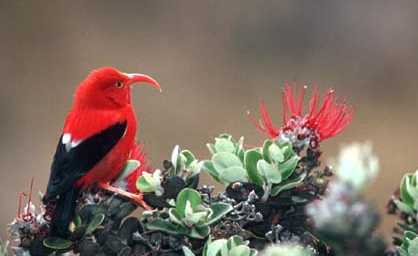Most visitors to the Hawaiian Islands and even most kamaaina or local residents never get a chance to see native forest birds. Lowland forests have been replaced with exotic vegetation and the introduced mosquito carries a disease that is deadly to most native birds. This means that surviving birds are found only in high elevation rainforests on the islands of Kauai, Maui and Hawaii.

Wendy Kuntz and Eldridge Naboa raising mist nets to capture forest birds at Hakalau Forest National Wildlife Refuge. Photo by UH Relations.
